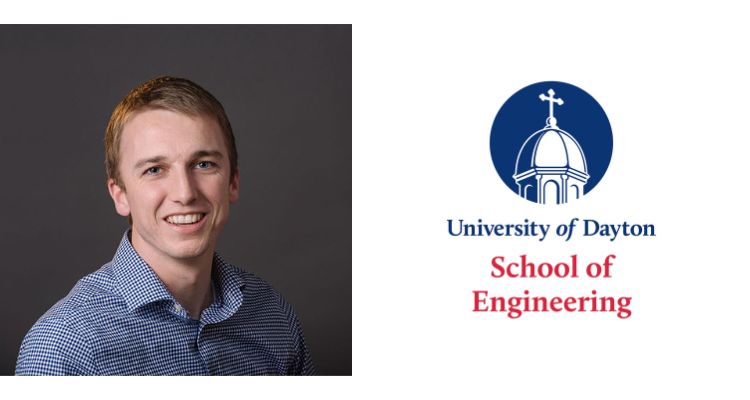Dayton Engineer

NASA grant to improve CubeSat satellites' ability to regulate heat, improve success rate of missions
Space may seem like mysterious territory that few have visited. Thanks to a NASA program, it’s becoming easier for universities, schools and nonprofits to collect data on space — without ever physically sending someone on a mission.
NASA’s CubeSat Launch Initiative allows universities to build small, 10 centimeter cube satellites that will be sent up to space via a larger NASA mission. CubeSats sit in the nose of the rocket and are shot into orbit.
Although CubeSats are fairly simple technology, the harsh space environment provides many challenges. As the CubeSats go in and out of the sun’s view, they heat and cool very rapidly and can cause the technology to break quickly. Because of this, many fail and never complete recording data.
Thanks to a grant from NASA, UD School of Engineering assistant professor Rydge Mulford is trying to solve this problem.
“CubeSats are so small that the technology we use for normal spacecraft is just too bulky and takes too much power,” Mulford said. “They can't generate enough energy to run it. And there's not enough area to use to reject that heat. Our idea is to develop what we call passive methods for CubeSat thermal control. Passive means you don't have to put power into it and it runs itself.”
The idea includes radial radiators which will capture the heat from inside of the CubeSat and cause a bimetallic spring to expand and curve, causing fins to deploy from the side of the CubeSat. The fins deploy without any power and reject that heat into space before collapsing back into the CubeSat body.

"This is really unique because most spacecraft generate heat which has to follow a sort of tortuous path in order to find a way to the outside of the spacecraft,” Mulford said. “What we've done is basically said ‘hey, let's have a bucket, scoop up that heat, take the bucket outside and dump it.’ Our job is to build this and test it inside of a really cold vacuum chamber — basically space but on the earth.”
The grant, which spans two years, is in partnership with Brigham Young University and the NASA Goddard Space Flight Center in Maryland.
“About 50% of CubeSat missions fail, as in they never do not complete their mission objective. One big reason is thermal management,” Mulford said. “I hope that by developing this kind of technology we can bring it to the lower budget space community. NASA is great but they need help. CubeSats give us the opportunity to try other things through other organizations."
